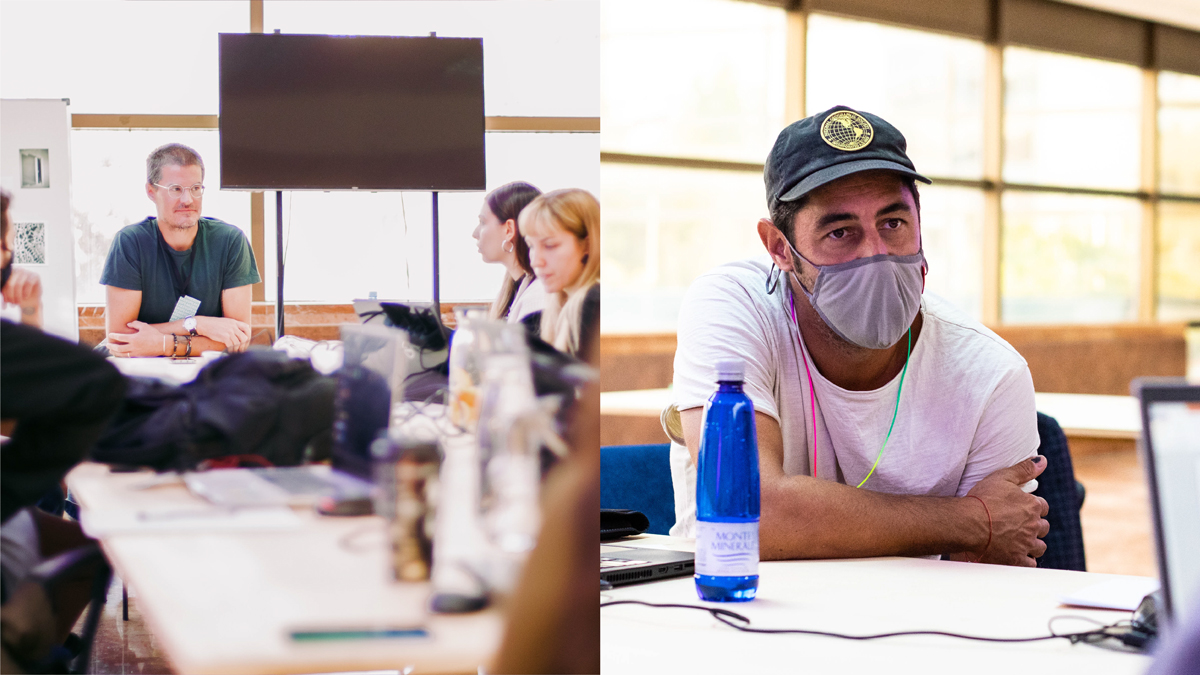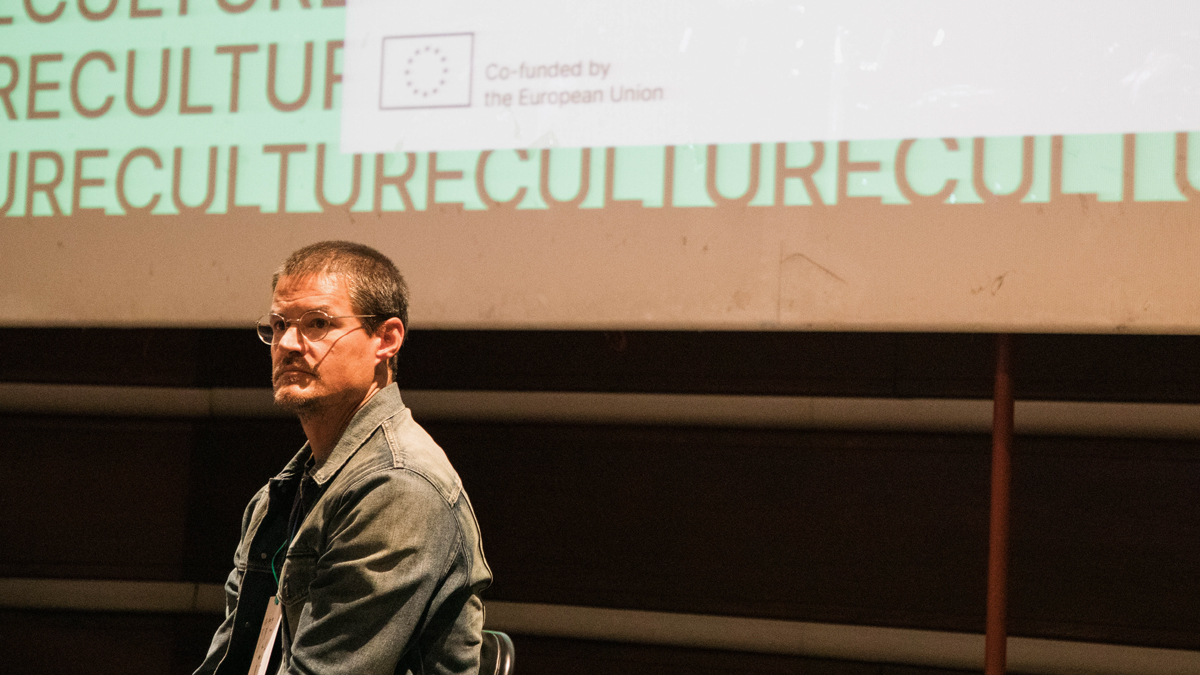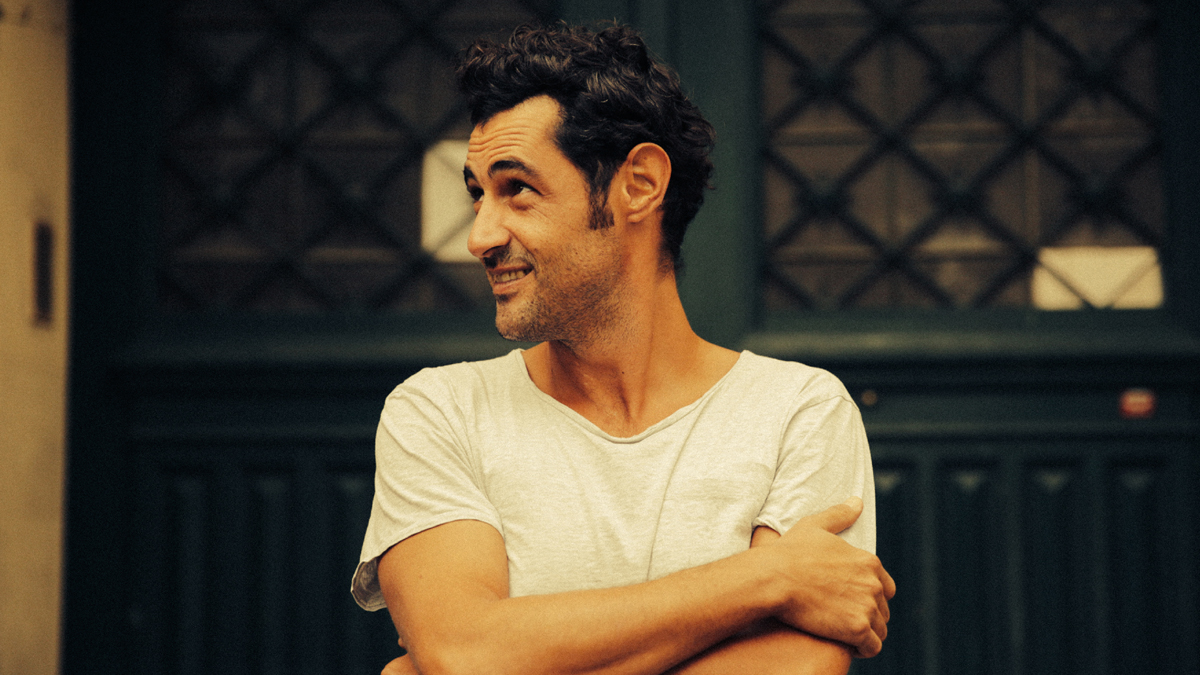They are buddies, colleagues, and professors from Vienna. This is not their first project collaborating, and it won’t take you long to understand why they complement each other so well. While Wolfgang Fiel has been immersed in space and its materials from an early age, Constantin Demner has perfected his graphic tools and language. They were invited to be the right hand to the design teams on the ReCulture, and their conclusions about the project follow in the continuation of the interview.
 Hello, Wolfgang and Constantin! It’s a pleasure to have you here today. Let’s rewind to 2020 when the concept of ReCulture was conceived. What prompted your decision to join this project upon receiving the initial invitation?
Hello, Wolfgang and Constantin! It’s a pleasure to have you here today. Let’s rewind to 2020 when the concept of ReCulture was conceived. What prompted your decision to join this project upon receiving the initial invitation?
W: I was inspired by the idea of getting to know the partners, institutions, and individuals involved and being part of a project that does make a real difference for 4 prestigious cultural institutions in the Western Balkans.
C: I had the privilege of being invited by INK as a speaker at the annual design conference “PDP” in Novi Sad twice in the past. There I met and connected with many protagonists of the Western Balkans design scene: I highly value their professionality, creativity, and warmth and I didn’t need to think twice before accepting the invitation to join the ReCulture project. Teaching at the University of Applied Arts Vienna for many years I experienced over and over how fulfilling mentoring and assisting young talent in the creation of a body of work can be.
Before the commencement of the ReCulture project, what were your perceptions of the cultural sector in the Western Balkans region?
W: I hardly had any, to be frank, which was another reason to embark on the project.
C: To me, it seemed obvious that there was a strong divide between high art and low art: wonderfully executed professional work on the highest international standard as opposed to the omnipresent vernacular. Good work is truly outstanding and then there is a very large pool of poor to mediocre. The mostly non-existent support for the cultural sector makes people who really want to accomplish something highly creative and achieve great things with very little. The level of creativity I was able to observe has been very inspiring.
Could you outline the similarities and distinctions between the young designers from the ReCulture project and your students at the university where you teach? In broad terms, have you observed variations in thinking processes between your students in Vienna and the young designers involved in this project? How did this comparison influence your approach to mentoring?
W: I would be hard-pressed if I were to point to significant differences. I am rather amazed at how homogenous the field of art and design is, all over Europe, which is a discussion I am leading with my students in Vienna. One aspect of note was the strong work ethic I’ve encountered with the Young Designers on the project. They made the task entirely theirs and took a very professional stance towards developing and implementing their work without excuses or lazy shortcuts. That allowed me to be a bit more demanding in my mentoring and to expect the designers to follow through.
C: Interestingly, the largest difference between students / young designers has less to do with Austria vs the Western Balkans but simply with differences between individuals in general. I could not find any Western Balkans-specific differences at all. I have learned early through teaching that one should never underestimate people as they are often surprised by their talent, focus, and determination.
As a mentor, what would you identify as the most significant lesson or insight you gained from your involvement in this project?
W: The most significant insight is the preparedness of the so-called case study institution to implement the results of the process across the board. This is a remarkable sign of trust not only in the work of the young designers but in the entire process as such. I really admire the courage and attitude that shows!
C: The design teams in this project consisted of two young designers and a local mentor for each institution. It was refreshing and eye-opening to see how well two creatives can complement each other when they receive mentoring and ongoing guidance. The best outcomes were achieved where teams had differing skill sets, such as spatial/architectural versus graphic / branding.
Reflecting on the design process, are there any aspects you would reconsider or alter in hindsight?
 W: Yes, there is one thing which is that the initial visits to the case study institutions should have been conducted by mentors and designers at the same time rather than separately. It took quite a while therefore at the beginning of the project to establish a common sense of what it is we are talking about.
W: Yes, there is one thing which is that the initial visits to the case study institutions should have been conducted by mentors and designers at the same time rather than separately. It took quite a while therefore at the beginning of the project to establish a common sense of what it is we are talking about.
C: I am very happy about the outcomes of this project. I teach my students that even seemingly unsuccessful parts of a design project can be turned into an asset if the documentation of the process has been successful. As with every project, there have been certain elements I found more successful than others, but shortcomings were successfully transformed and overcome and the overall package is truly on point.
Did your initial expectations at the project’s outset align with the project’s progression and the outcomes achieved? If not, what notable differences emerged?
W: I can happily say that the outcome outstripped my expectations by some margin, which, of course, is much better than the other way around.
C: Out of the four projects some aligned with what I had imagined while others exceeded my expectations while others aligned with what I had imagined to be possible. Is there anything more exciting than being surprised by the creativity of talented designers and artists?
Drawing from the insights gained through this project, in what ways do WB cultural institutions resemble and differ from their EU counterparts?
W: This is a very tricky question to answer because they are literally impossible to compare. I suppose it’s fair to say that there is a difference in funding, which on the other hand does not translate into apparent differences in quality. It does have other implications though, such as the ability for long-term financial planning. The institutional dexterity and extra creativity this limitation affords are palpable in a very charming and winning way.
C: Building a world that inspires us and continually pushes boundaries takes time and work. Antiquated ways of doing things, especially on a systemic level are usually so engrained in institutions that it takes a lot of effort to creatively break through these limitations. In most cases, we were able to achieve our desired results. I am sure that it won’t take long before new, exciting, and cutting-edge ideas can be established within institutions and other cultural areas.
Could you provide some guidance for young creatives and cultural institution personnel regarding the importance of visual culture in conveying and understanding content that ultimately becomes part of a society’s heritage?
W: Big question! First of all, we do live in a time where images are the predominant resources of communication. While some of them convey a message, all of them reveal a particular aesthetic, whether on purpose or by accident. The purposeful exploration of that aesthetic is the tenet of meaningful visual communication. So, better know its rules! Secondly, it is very important to understand that every detail matters! What is often overlooked by staff and designers alike is that in addition to the big gestures, small things work their way into the general consciousness too and hence are part of what we call “culture”. Thirdly, it is a sign of cultural sophistication that there is a general understanding and acknowledgment of the importance of visual culture for the purpose of consistence and subversion at the same time.
 C: I believe that the cultural sector is there to not just entertain but to also educate, provoke, and challenge existing systems. Obviously, everything is connected and cultural institutions are dependent on funding and support in general. These dependencies can be limiting and suppressive at times, not just in the Western Balkans, but in any country. The more projects manage to prove their effectiveness of being educational and challenging the more other projects will follow. While there certainly are many areas that need to be communicated visually in a very literal sense, the cultural sector especially can benefit from more poetic and daring visual translations. Visual Communication can transform into visual art and vice versa.
C: I believe that the cultural sector is there to not just entertain but to also educate, provoke, and challenge existing systems. Obviously, everything is connected and cultural institutions are dependent on funding and support in general. These dependencies can be limiting and suppressive at times, not just in the Western Balkans, but in any country. The more projects manage to prove their effectiveness of being educational and challenging the more other projects will follow. While there certainly are many areas that need to be communicated visually in a very literal sense, the cultural sector especially can benefit from more poetic and daring visual translations. Visual Communication can transform into visual art and vice versa.
WOW! WOW! WOW! Dear mentors, thank you for another valuable lesson!
W: The pleasure is mine!
C: Stay happy and healthy! Ciaooooo!